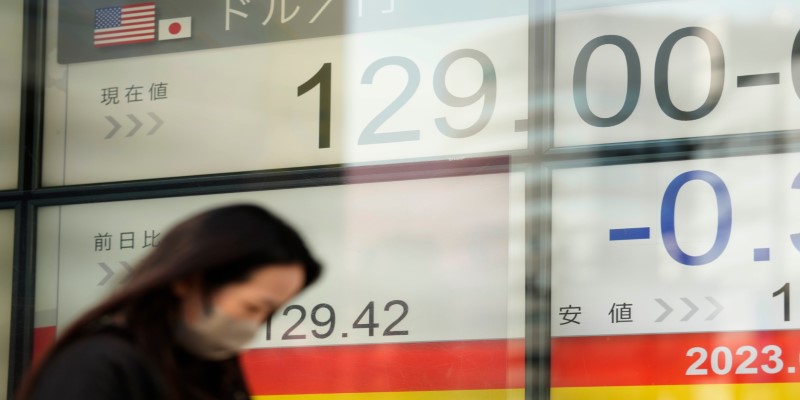Understanding the 5 Countries Leading With the Lowest Loan Rates
Interest rates seem to be just another financial term, but they do have the ability to manipulate the course of not only economies but individual lives, too. These lending terms are affecting home loans, national investments, and other forms of economic management. Countries even keep interest rates abnormally low for purposes of borrowing, to promote spending, or to get their economy untracked.
But why do some nations choose such low interest rates, and what does this strategy portend for their economies? To answer those questions, it's helpful to look at the five lowest and what makes these countries unique.

Unpacking the Global Race For Low Interest Rates
Interest rates are not in a vacuum-they are influenced by intricate factors like inflation, currency stability, and global economic tendencies. A country's central bank determines the interest rates to manipulate the economy. It either reduces the accessibility of money to borrow or provokes people to save.
Countries with the lowest interest rates have problems different from those of others; sometimes, these problems are created by deflation, uneven trade, or merely domestic spending. For a few, low rates are a bad necessity; for others, it's just a strategic choice to keep themselves competitive in the world. Below, we look at how five countries implement these policies to counter their respective economic worries.
Japan: A Pioneer of Ultra-Low Rates
Japan is the poster child for ultra-low interest rates, a policy it has maintained for decades. In the 1990s, after the collapse of its economic bubble, Japan struggled with deflation and stagnation. To revive the economy, the Bank of Japan slashed interest rates to near-zero levels—a strategy that has persisted to this day.
Japan’s aging population plays a big role in its monetary policy. With fewer young workers contributing to the economy, consumer demand remains low, making it crucial to stimulate growth through cheap borrowing. Businesses benefit from lower capital costs, but savers face nearly zero returns, often pushing them toward higher-risk investments.

While Japan’s approach has stabilized its economy, critics argue that prolonged low rates have done little to tackle its deeper structural issues, such as low productivity and a shrinking workforce. Moreover, these policies have created a unique financial culture, with investors seeking innovative ways to balance low returns on savings.
Switzerland: Preserving Economic Stability
Switzerland’s ultra-low interest rates are primarily a tool to manage its strong currency, the Swiss franc. As a safe-haven currency, the franc tends to strengthen during global crises, making Swiss exports more expensive and hurting trade-dependent industries.
To counteract this, the Swiss National Bank (SNB) has kept its interest rates negative for several years, discouraging capital inflows and reducing upward pressure on the franc. While this benefits exporters, it has downsides for savers and investors, who face minimal returns on bank deposits.
Switzerland’s strategy reflects its commitment to balancing domestic economic stability with international competitiveness. However, debates continue about whether such low rates could lead to longer-term challenges, like asset bubbles or diminished financial security for retirees. This unique balancing act keeps Switzerland’s economic policy in the global spotlight, serving as a case study for small, trade-focused economies.
Denmark: A Case of Currency Pegging
Denmark’s low interest rates are closely tied to its fixed exchange rate policy. The Danish krone is pegged to the euro, requiring Denmark to align its monetary policy with the European Central Bank (ECB). When the ECB introduced negative rates to stimulate the eurozone economy, Denmark followed suit to maintain its currency peg.
The policy has had significant effects on Denmark’s economy. Homeowners enjoy historically low mortgage rates, which have fueled real estate investments and a booming housing market. However, the flip side is that savers and pension funds face lower returns, creating long-term financial challenges.
Denmark's priority remains to maintain the krone's stability relative to the euro, even if it means adopting policies that may not be ideal for all parts of its economy. This dedication to currency stability underscores how small nations often have to make unique trade-offs to align with larger economic systems.
Sweden: Pioneering Negative Rates
Sweden made headlines as one of the first countries to experiment with negative interest rates. The Riksbank, Sweden’s central bank, introduced these rates to combat deflation and encourage economic activity during global downturns.
Negative rates had their intended effect in some areas, such as boosting consumer borrowing and keeping the economy resilient. However, they also created challenges for traditional banking models as financial institutions struggled to profit from lending.

Sweden has since shifted back to slightly positive rates, but its bold experiment remains a landmark in modern monetary policy. The experience highlighted both the potential and pitfalls of such unconventional strategies. Furthermore, it showcased how small economies can take bold steps to address unique challenges while also influencing global economic trends.
The Eurozone: A Unified Monetary Policy
While not a single country, the eurozone deserves mention for its collective approach to low interest rates. The European Central Bank sets monetary policy for all member states, aiming to balance growth across a diverse range of economies, from Germany’s industrial power to Greece’s recovery efforts.
Low rates in the eurozone encourage borrowing and investment, especially in nations with high debt levels. However, the policy isn’t without drawbacks. Critics argue that it disproportionately benefits struggling economies while penalizing savers and conservative investors in more stable countries.
The eurozone’s experience underscores the complexity of managing a unified monetary policy across nations with vastly different economic realities. These policies not only aim to stabilize the bloc but also impact global economic trends, influencing trade, investment, and currency stability on a broader scale.
Conclusion
The five countries with the lowest interest rates each offer a unique window into the intricate world of monetary policy. From Japan’s decades-long battle with deflation to Denmark’s efforts to maintain its currency peg, these nations highlight how economic strategies are tailored to specific challenges and goals.
Low interest rates can boost borrowing and investment, but they often come with trade-offs, such as diminished savings returns and the risk of financial bubbles. Understanding these policies provides valuable insights into global economic trends and the delicate balance between growth and stability.












